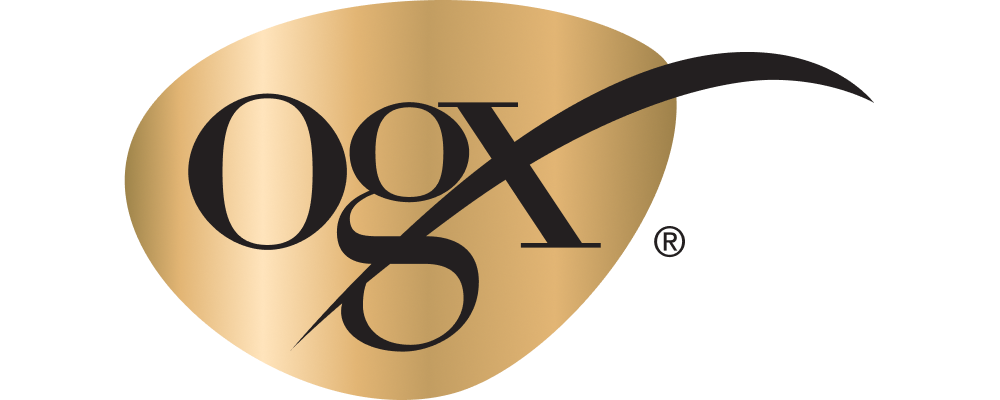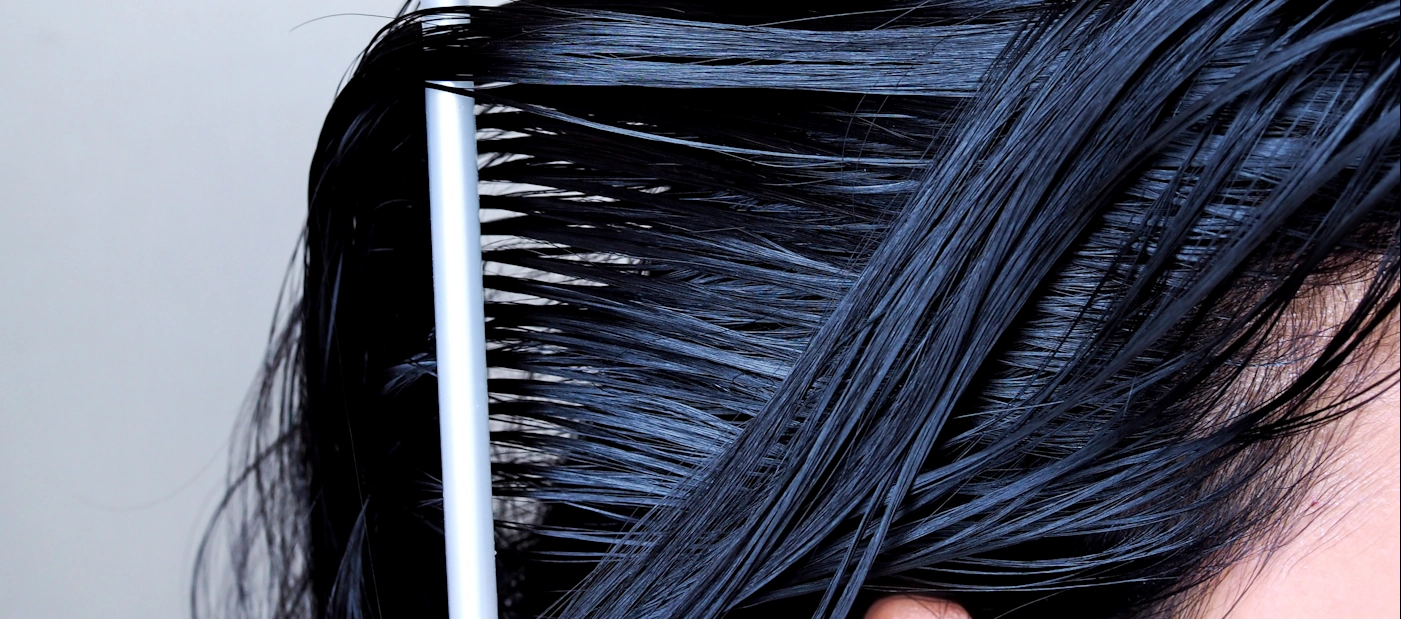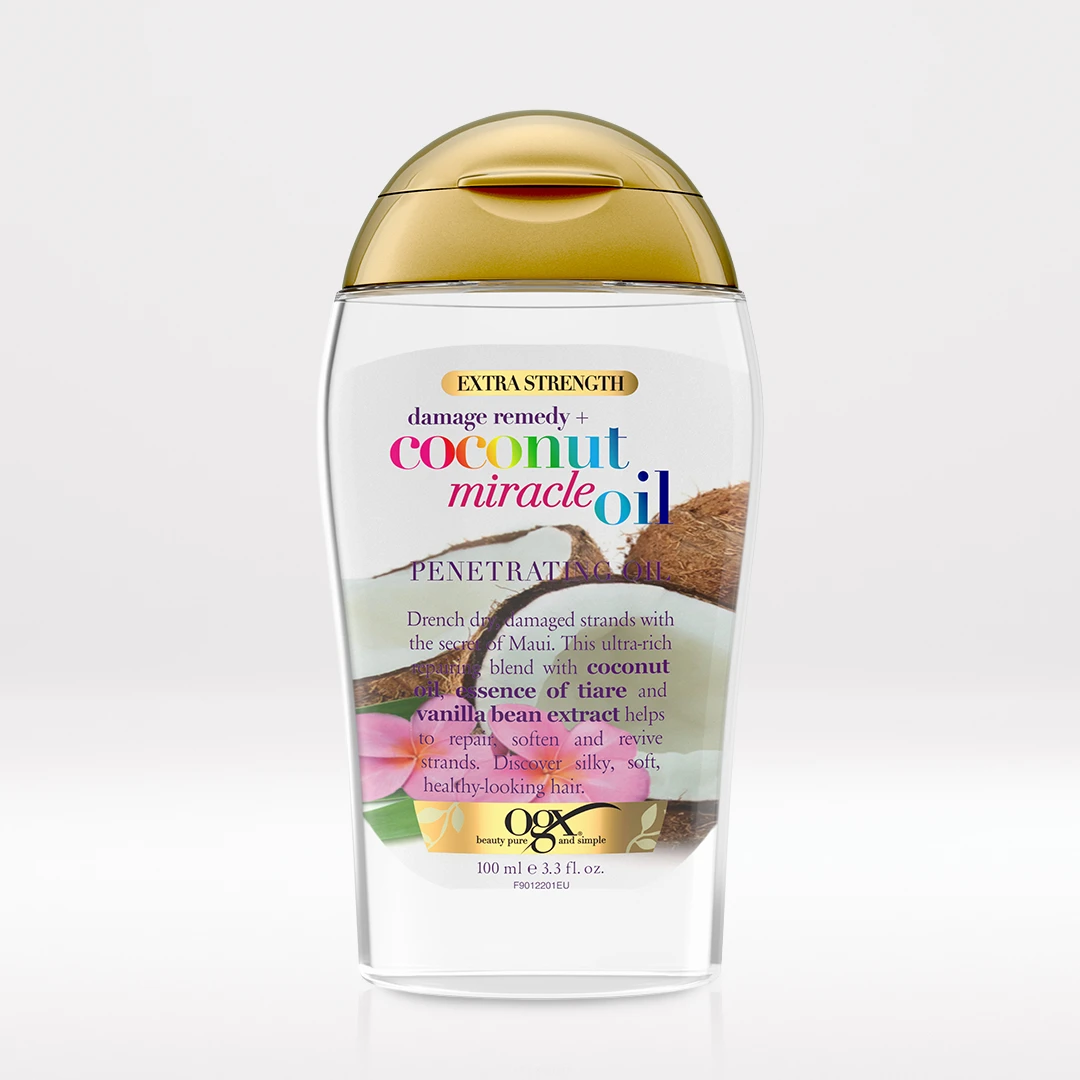Hair oiling is an ancient practice known for its ability to promote, healthy-looking, shiny hair, so it’s no wonder that it’s recently been gaining popularity on social media! Hair-lovers have been re-discovering the benefits of hair oiling and turning to OGX® to help them achieve the lustrous locks of their dreams.
If you want to start oiling your hair but don’t know where to begin, we’ve done a deep dive on what this trend is all about. Read on to learn how to oil your hair, and why this one practice could be the missing step in your hair care routine.
What is hair oiling?
Hair oiling is rooted in ayurvedic tradition and involves applying an oil or oil blend to the lengths of your hair, then letting it sit for at least a few minutes before washing it out. Hair oiling is often practiced alongside scalp oiling, but it’s worth noting that oil can be beneficial for both the hair and scalp separately.
Some of the most popular oils used in hair oiling include coconut oil, jojoba oil, almond oil or castor oil, and this pre-shampoo step can help to reduce breakage and add moisture to parched, dry hair. Our Damage Remedy + Coconut Miracle Oil Treatment is a hair oiling favorite, as its silky, nourishing formula makes it easy to quench your hair before (and after!) every wash.
So, how does hair oiling work?
Just like our skin produces oil, so does our scalp. The sebum produced from our scalp works to naturally moisturize and condition the hair, but when the balance is off your hair can feel either too greasy or dry. Hair oiling can help to provide your hair with the benefits of sebum, while still being able to wash it on a regular schedule.
Everyone naturally produces sebum, so hair oiling can be beneficial for all hair types. And because the oil is only left on for a few minutes or hours before shampooing, hair oiling is a step that can easily fit in anyone’s hair wash routine.
The benefits of hair oiling
Okay, so you’re considering oiling your hair. But what exactly can it do to help you achieve healthy-looking, luscious locks?
Hydrate parched strands
Dry hair is prone to frizz and tangles, but hair oiling helps to keep that all-important moisture within the strand. Oils work to smooth the hair cuticle and create a barrier that prevents moisture from evaporating. The result? Hydrated, silky hair.
Repair hair damage
Hair is made up of a protein called keratin, and lifestyle factors such as heat styling, bleaching and UV rays can cause damage to the keratin over time. When this happens, the hair is more prone to tangling, frizz and breakage.
Add softness and shine
Even though you’ll be washing your hair after oiling it, the oils from the ends of your hair won’t be completely removed. This is a good thing, and means that the shine-enhancing, softness-boosting benefits of hair oiling will last beyond the shower. You won’t have to work as hard to make your hair look smooth and shiny when you style it – it will actually be smooth and shiny!
Prevent hair breakage
Everyday stressors like brushing your hair or slicking it back can lead to damage or even breakage over time. While being gentle with your hair is always a good idea, hair oiling can help increase how much physical tension your hair can withstand and help reduce hair breakage. Oils are able to make strands more flexible and more able to withstand twisting. This means that oiling your hair will help protect it and make your hair more resilient to the wear and tear of routine washing and styling.
Promote stronger hair
The key to strong hair is to manage split ends and prevent breakage. Alongside getting regular trims, oiling your hair can help to moisturize and strengthen your strands right down to the tips. The results? Less split ends as less tangles, which means healthier-looking hair over time.
How to start a hair oiling routine
Now you know the benefits of hair oiling, there’s no reason why you wouldn’t want to add it to your routine! Hair oiling should be done on dry hair at least once a week, and consistency is key to see the best results. Here’s how to properly oil your hair:
Step 1: choose your oil
There are many different types of oil and oil blends out there, so it can be hard to know what oil to use for hair oiling. Our Damage Remedy + Coconut Miracle Oil is a crowd favorite for good reason, as the nourishing, ultra-rich blend is ideal for diverse hair textures ranging from medium to dry, coarse hair. The formula works to help reduce signs of hair damage, add strength and shine, plus the coconut milk, tangerine and warm vanilla scent makes it an all-around sensory experience. No matter your hair type, oiling your hair with our Damage Remedy + Coconut Miracle Oil will help you achieve smooth, luxurious hair.
Step 2: prep your hair
Gently brush or comb through your hair to avoid any tangling. If you have a wavy or curly hair type, you may prefer to lightly spritz your hair with water before this step.
Step 3: apply the oil
Starting at the ends of your hair, apply a few drops of oil to your lengths. Use your hands to thoroughly work it in, and add more oil as needed. You don’t want to saturate your hair, but it’s important that the oil is evenly spread throughout the lengths and ends of your hair. You can bring it up to the roots, too, but just make sure to double cleanse after to avoid feeling greasy.
Step 4: let it sit
Hair oil can be left on for just a few minutes, a few hours or even overnight. If you’re oiling your hair for the first time, start with 30 minutes to get a feel for how your hair responds. You can always throw on a shower cap to protect it while it sits!
Step 5: wash it out
That’s it! Now all you need to do is shampoo, condition and style your hair as usual. Remember, you should only ever apply shampoo to the roots of your hair to avoid drying it out (the lengths will be cleansed with any run-off.) You may prefer to shampoo twice, especially if you’ve applied oils to your scalp as well.
And the best part about our Damage Remedy + Coconut Miracle Oil? It can be used after the shower, too. Apply a few drops on clean, damp hair to help and enjoy silky smooth hair between every wash.
Try hair oiling for yourself
Hair oiling has been around for generations, and it’s clear to see why. Simply adding some oil to your hair before you wash it can help to protect and hydrate your locks and help you achieve silky, shiny hair. Try it for yourself and embrace the nourishing power of hair oils.


